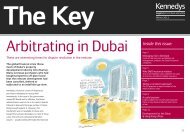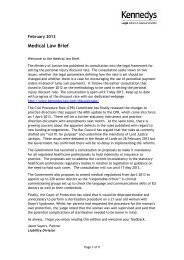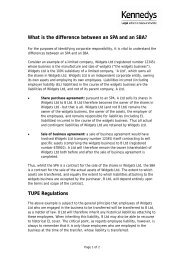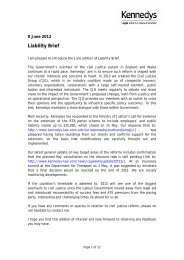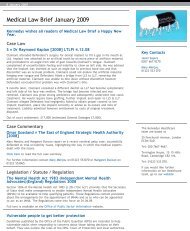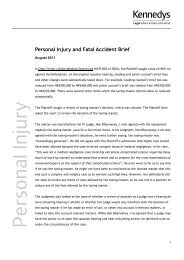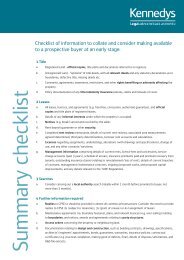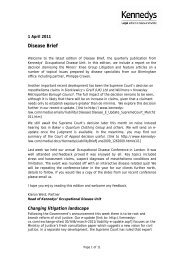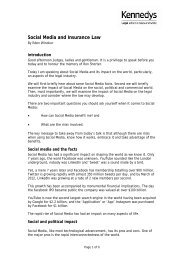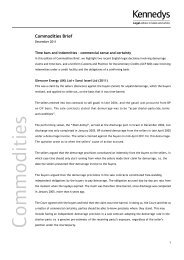Download Hong Kong Key - Summer 2009 (PDF, 256KB). - Kennedys
Download Hong Kong Key - Summer 2009 (PDF, 256KB). - Kennedys
Download Hong Kong Key - Summer 2009 (PDF, 256KB). - Kennedys
Create successful ePaper yourself
Turn your PDF publications into a flip-book with our unique Google optimized e-Paper software.
The Rotterdam rules<br />
A new era for international trade – probably<br />
After six years of intergovernmental<br />
negotiations, the United Nations General<br />
Assembly has finally adopted the United<br />
Nations Convention on Contracts for<br />
the International Carriage of Goods<br />
Wholly or Partly by Sea, also known as<br />
the “Rotterdam rules” (the Rules). It has<br />
scheduled a signing ceremony for the new<br />
convention to take place on 23 September<br />
<strong>2009</strong> in Rotterdam. Before it can come<br />
into force, however, the new convention<br />
There are several significant changes. For certain<br />
carriers, the Rules will apply door-to-door. The<br />
Rules also attempt to strike a fair balance of risks<br />
between carriers and cargo interests by removing<br />
the “navigational fault” exception, increasing the<br />
package/weight limitation and enhancing time<br />
limitation for cargo claims. Other reforms are designed<br />
to accommodate changing shipping practice. The<br />
most significant reform is probably<br />
the introduction of a “volume<br />
contract” exception, which<br />
permits the contracting<br />
carrier to disregard the<br />
what is known as “wet multimodal transportation”<br />
in order to accommodate contracts of carriage<br />
and insurance agreements that are nowadays<br />
mainly concluded on a door-to-door basis. This is<br />
a significant change from existing law, since most<br />
current international regimes apply on a tackleto-tackle<br />
or port-to-port basis. Although the Rules<br />
would facilitate door-to-door transportation, the<br />
parties will still be able to opt-out of the inland leg<br />
of carriage (by truckers and railroads), so that the<br />
Rules will only apply to the sea leg.<br />
requires ratification by at least 20 nation<br />
member states, and no reservations<br />
Rules almost in their<br />
entirety.<br />
are permitted (except as regards the<br />
provisions relating to jurisdiction and<br />
arbitration, which are subject to express<br />
affirmation). In addition, ratifying states<br />
must discard earlier conventions.<br />
The key<br />
changes<br />
This article highlights the<br />
key changes made by<br />
the Rules and compares<br />
The Rules consist of 96 articles packaged in 18<br />
chapters, and aim to replace the existing patchwork<br />
of conventions and conflicting national laws that have<br />
grown up in the absence of a multimodal transport<br />
agreement. The new convention aims to offer the<br />
possibility of a jurisprudential environment in which<br />
international maritime trade can develop in such a<br />
way as to allow traders to govern their transactions in<br />
a more predictable and consistent manner.<br />
them with the existing<br />
international conventions.<br />
• Door-to-door<br />
transportation<br />
coverage.<br />
The Rules<br />
were primarily<br />
designed to<br />
govern the liability<br />
of carriers providing<br />
4



